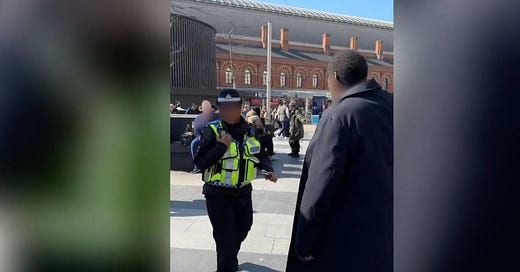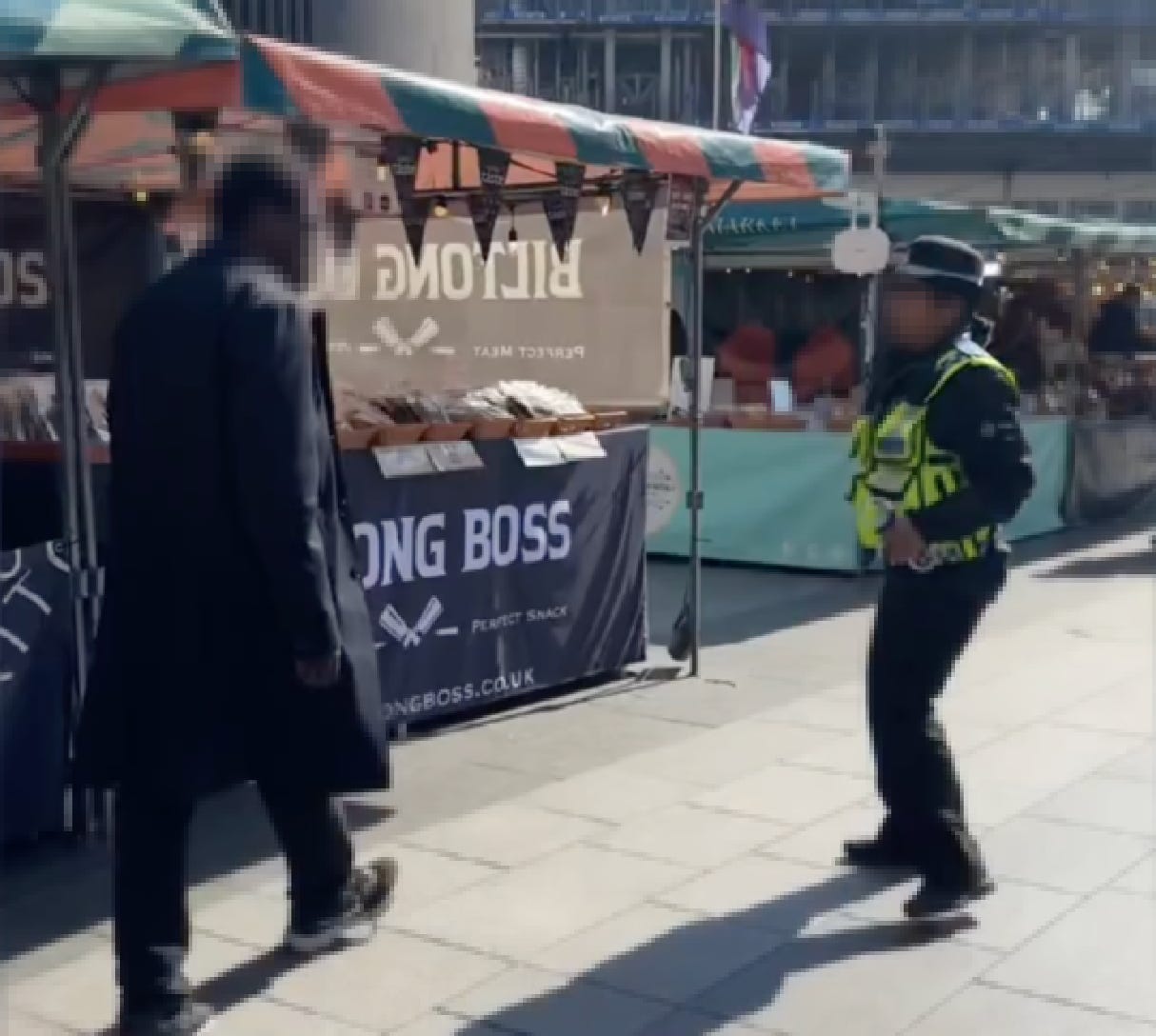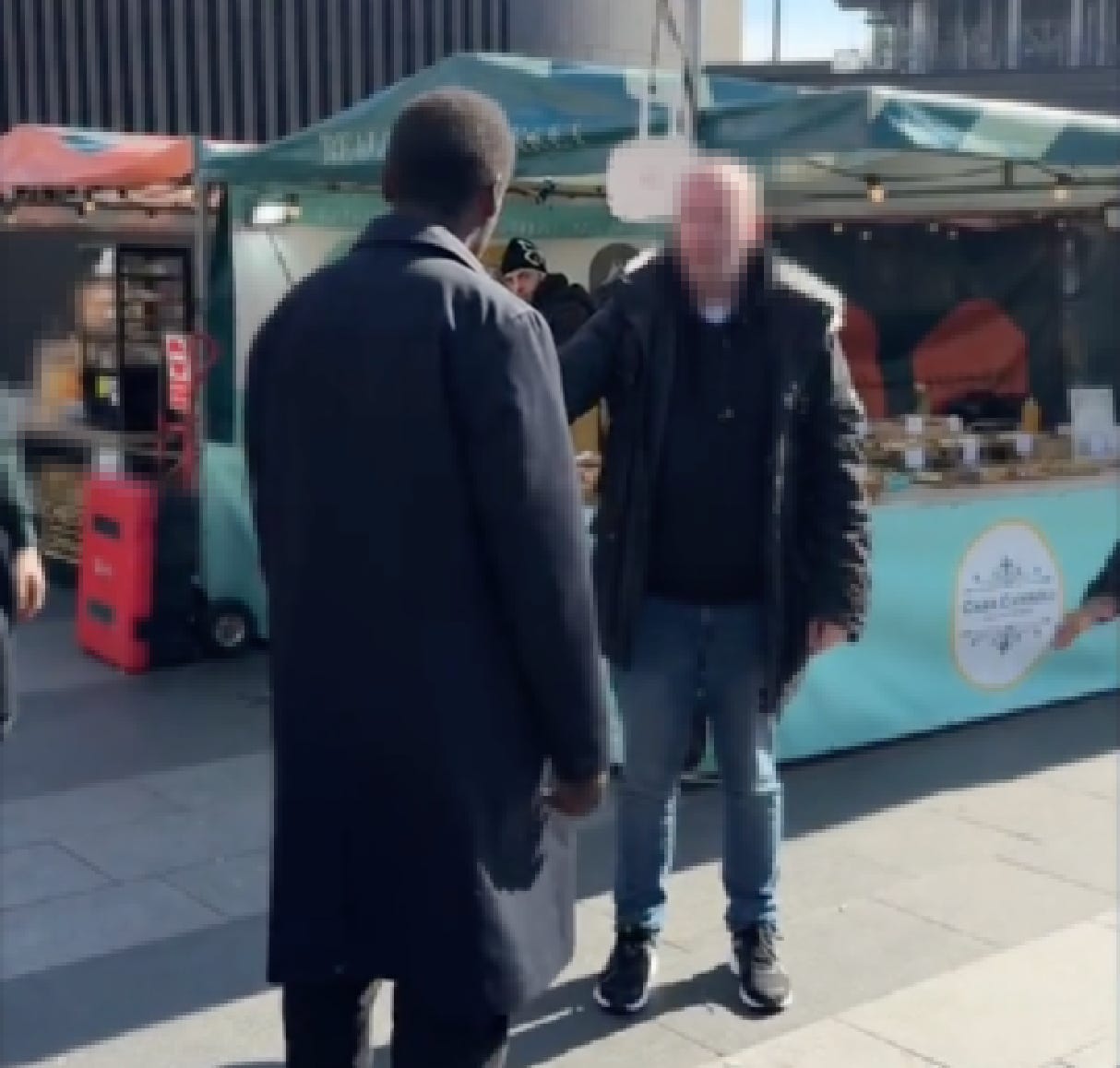WATCH | Left Alone and Vulnerable: The Reality of Policing Without Backup
A lone PCSO, a looming threat, and no immediate backup, this incident raises urgent questions about frontline policing, officer safety, and public indifference.
The video is difficult to watch. A British Transport Police Community Support Officer (PCSO) is walking backwards, her voice urgent over her personal radio, calling for backup. A man in a long coat is bearing down on her, his words unintelligible, his presence imposing. She shouts into her radio: "Hurry up!" And yet, passersby walk past, indifferent to the unfolding scene, oblivious to the distress she is in. The weight of the situation rests entirely on her shoulders, and in those crucial moments, she is alone.
The PCSO’s distress is obvious. She is out there without immediate support, left to manage a situation that could have turned dangerous in an instant. The fear in her voice tells the story of thousands of frontline officers and PCSOs across the country—overstretched, under-resourced, and vulnerable. Fortunately, an off-duty police officer steps in, flashing his warrant card and intervening before uniformed officers arrive to back their colleague up. But this incident shines a light on a much bigger issue—why was she in this position in the first place? Why are emergency responders still being put in dangerous situations without adequate support?
The Risks of Solo Patrolling
PCSOs play a crucial role in community policing, providing visibility and engagement with the public. However, they are not sworn police officers and do not carry the same powers or equipment. Unlike their warranted colleagues, PCSOs lack batons, PAVA spray, or Taser—meaning their ability to defend themselves is limited.
In this case, the PCSO did the right thing by keeping her eyes on the suspect rather than turning her back. But she was alone, clearly panicked, and struggling to communicate effectively over the radio. Without knowing what happened before the video began, it’s hard to evaluate the full context, but what we can see is a scenario that could have ended very differently had the male had violent intent. The sight of a lone PCSO trying to manage such a situation raises serious concerns about whether PCSOs should ever be deployed alone, especially in high-risk environments.
As someone who served nearly a decade on a 999 response team in East London, I’ve dealt with these kinds of situations firsthand. Experience teaches you how to handle escalating threats, how to use your voice to control a dominate a situation, and how to communicate effectively under stress. But PCSOs don’t get the same level of training as police officers. They are often left to learn through real-life encounters, which is not only unfair but also dangerous. And when you’re thrown into an unpredictable situation with no immediate backup, experience—or lack thereof—can make all the difference. We should be asking ourselves: are we equipping PCSOs with the right skills to handle moments like these? And if not, why are we putting them at risk in the first place?
A Training and Policy Issue
This video raises serious questions about PCSO training. Did she have the tools to manage this situation effectively? Was her radio communication as clear and precise as it should have been? These moments can be chaotic, but strong communication is critical—not just for the officer’s own safety, but for ensuring backup arrives as quickly as possible. If PCSOs are expected to deal with potentially volatile individuals, then they must be given the necessary training to do so confidently and safely.
There’s also the issue of solo patrols. A PCSO, especially one of smaller stature, should not be left to face potential threats alone. The man in the video towered over her; had he chosen to attack, there was very little she could have done to stop him. It’s alarming to think that her only real defence was the hope that backup would arrive in time. Police officers themselves should not be patrolling alone, let alone PCSOs who have even fewer defensive options. This isn’t just about training—it’s about policy and ensuring that frontline officers, regardless of their role, are not left dangerously exposed.
The Bystander Effect
One of the most unsettling aspects of this video is the reaction—or lack thereof—of the public. Dozens of people walked past, oblivious or indifferent to what was happening. Had this male been violent, the PCSO could have been seriously injured before anyone thought to step in. This isn’t just a policing issue—it’s a societal one. Have we become so desensitized that we don’t recognize a situation that clearly requires intervention? Or is it that people no longer feel a sense of collective responsibility when they witness distress? Either way, the lack of awareness or willingness to assist speaks volumes about where we are as a society.
This indifference raises uncomfortable questions. Are people afraid to get involved? Do they assume the police can handle everything alone? Or have we lost the ability to recognize when a situation is spiralling towards danger? Either way, the footage makes it painfully clear—emergency workers are left far too vulnerable without intervention and immediate backup.
Watch the Full Video
The video of this incident is now available below for premium subscribers. Our premium subscribers enable us to continue reporting on the realities of frontline emergency services, bringing you in-depth analysis and coverage that wouldn’t exist without their support. ESN Report is dedicated to exposing the challenges that police, paramedics, firefighters, and other emergency workers face daily, and without our premium subscribers, this platform would not exist. Their support allows us to provide investigative reporting, expert insights, and real-life case studies that shed light on what is really happening on the frontline.
If you want to see for yourself the challenges PCSOs and police officers face on the frontline, upgrade to Premium now and gain exclusive access to this footage and our other premium content. This isn’t just about watching a video, it’s about understanding the reality of policing in today’s world, where under-resourcing and public apathy leave officers dangerously exposed.
Keep reading with a 7-day free trial
Subscribe to ESN Report to keep reading this post and get 7 days of free access to the full post archives.





